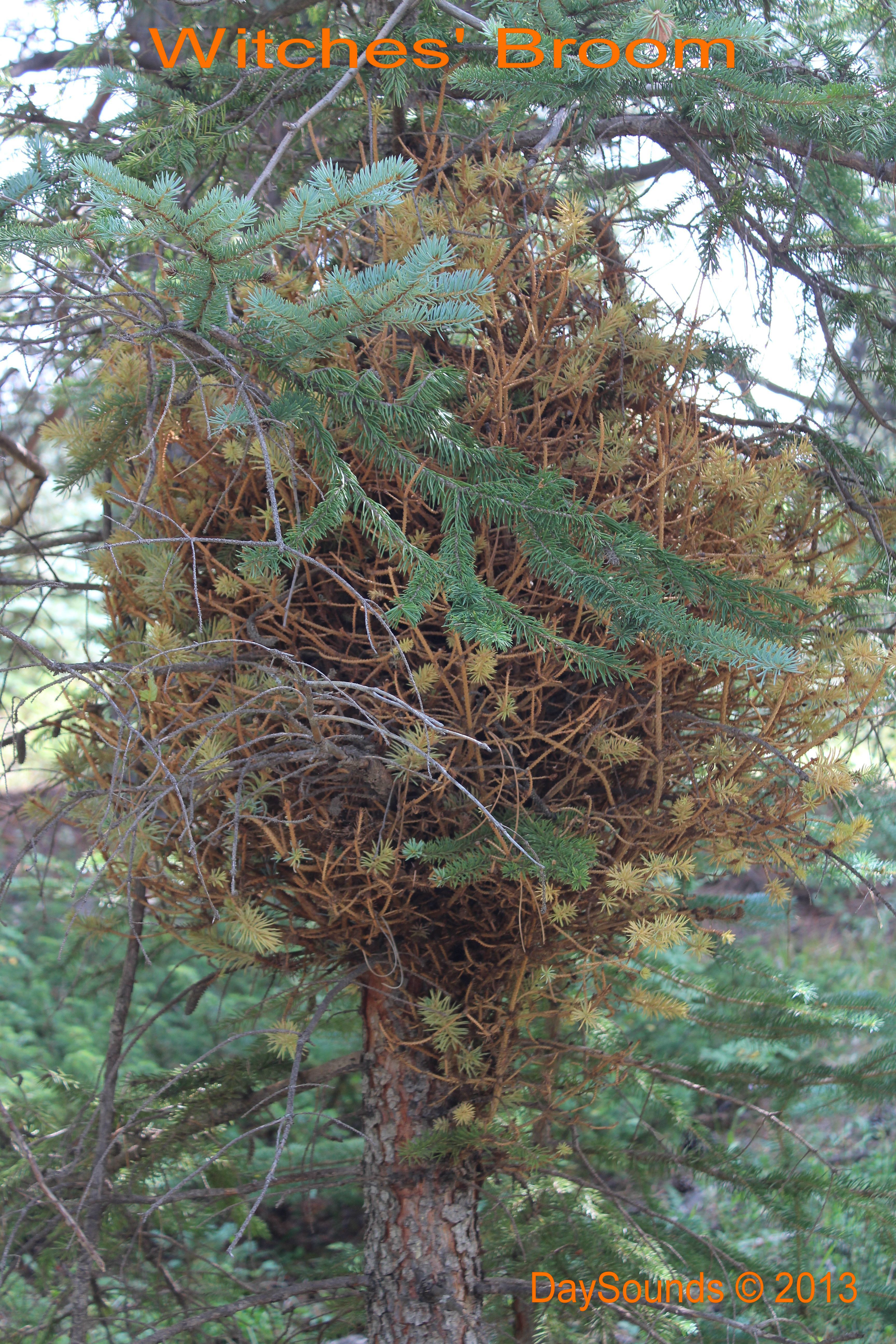by DaySounds © 2013-14

Witches' Broom
brooms. They kill the tree little by little by absorbing its nutrients, weakening it, and making it extremely susceptible
to insect invasions, viruses, and bacterial infections. The invading fungus reproduces mostly through wind-blown
spores. These spores grow in capsules (usually powdery when squeezed, matte, white/orange-looking lines or
"spots" on needles, twigs, or soft parts of trunks--not to be confused with resin, which is glossy, crystal-like, and
more solid). When the capsules open, the wind carries the spores to other parts of the same tree or to other trees.
If the spores land on a soft part of a trunk, attach to it, and start their destructive cycles, forming witches' brooms
in it, the tree usually dies shortly (1-10 years, depending on how large and healthy the tree used to be).
The fungus stimulates uncontrolled new bud growth in the host area where it lives, with twigs growing and
developing in an intermingling manner--so much that they look like a hawk's nest. In zones where flying squirrels
live, some have cut here and there, added and subtracted, adjusting and adopting witches' brooms as their nests.
Do not eat.
©DaySounds
PO Box 746497
Arvada, CO 80006
USA